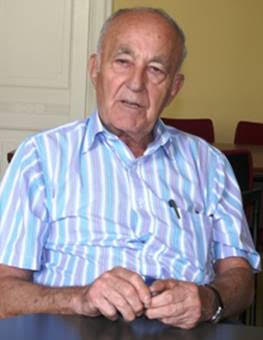
THE VOICE OF INTERNATIONAL LITHUANIA
|
VilNews has its own Google archive! Type a word in the above search box to find any article.
You can also follow us on Facebook. We have two different pages. Click to open and join.
|
Author Archive
The book, “1939, The Year that Changed Everything in Lithuania’s History” reveals the unflattering response by the top leadership, their abdication, and flight from the nation, leaving the population defenseless… without any responsible and effective resistance… as if independence never happened
- Posted by - (0) Comment
Go to our Section 5 to participate in the discussion
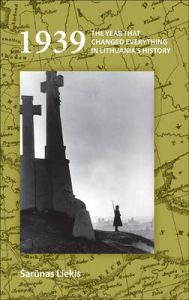
Book author: Sarunas Liekis
In a commentary to our VilNews article series "Lithuania and the Soviet Union 1939-1940" (Section 10 - HISTORICAL LITHUANIA) Tony Mazeika from Mission Viejo in California writes the following:
"It is necessary to read the full account of Lithuania's leadership response to Soviet demands and occupation in 1940. The book, "1939, The Year that Changed Everything in Lithuania's History", Arnas Liekis, reveals the unflattering response by the top leadership, their abdication, and flight from the nation, leaving the population defenseless...without any responsible and effective resistance. It's as if independence never happened. Lithuania, together with Latvia & Estonia, make no formal military resistance knowing that Finland fought in 1939-1940 and survived a Soviet onslaught. Much more need to be disclosed about those "patriots" who chose to run rather than fight for their nation."

Tony Mazeika
- Bookmark :
- Digg
- del.icio.us
- Stumbleupon
- Redit it
- Posted by - (0) Comment
Our VilNews Associate Editor, Vin Karnila, has edited the four articles we have presented on the topic "Lithuania and the Soviet Union 1939-1940" from the personal memoirs of Juozas Urbšys. Here is his response to Mr. Mazeika's commentary:
Easy to say that they should have organized formal Military resistance – and get slaughtered
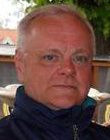
Vin Karnila
I would like to thank you Mr. Mazeika for sharing your thoughts with us and making us aware of what I'm sure is a very interesting book written by Arnas Liekis.
You bring up a topic that has been discussed many times throughout the years following 1940. The members of the Lithuanian delegation that were involved in the negotiations with Russia have always claimed that they knew that Russia at any time they chose could have invaded Lithuania. They also felt that if Russia did in fact invade, whether there was organized military resistance or not, this would result in catastrophic consequences for Lithuania and its people. Throughout the negotiations they said that what they were trying to achieve was the best possible outcome for Lithuania. In the end what they achieved was the best possible outcome that Russia would allow.
The topic of the courageous people of Finland and their organized military resistance to Russia's invasion of their homeland in relation to the fact that Russia's invasion of Lithuania in 1940 occurred without a shot being fired has also been discussed many times. The question remains how much did Lithuania know or did not know about Finland's armed resistance to Russia in what is known as the "Winter War"?
3 October 1939 the Lithuanian delegation flew to Moscow to begin the negotiations with Russia. 30 November 1939 Russia attacked Finland to begin the "Winter War". By March of 1940 both sides began to negotiate a peace treaty. Did Lithuania know that in spite of the great courage of the Finns the primary factor in Finland's success was that the Winter War was fought in some of the harshest of winter weather conditions and in equally harsh terrain? This harsh terrain the Finns knew like the back of their hand and the weather conditions to them was normal winter weather? Did Lithuania know that if Russia attacked across the gentle rolling hills and flat farmlands of Lithuania in spring or summer that the advantage of weather and terrain, that so greatly helped the Finns, would only make Russia's evil task easier? An invasion of Lithuania by Russia in the spring or summer of 1940 would have been a military situation completely the opposite of the Finland's and Russia's Winter War. Did Lithuania know that whatever peace agreement Finland and Russia came to that it would end up being short lived? Had Lithuania taken notice of the fact that no Western power had come to Finland's aid with any meaningful support? From all reports, Lithuania realized that their Military, no matter how courageously they fought, was no match against the might of Soviet Russia's army.
Many comments have been made and questions asked about the large number of government and Military top officials that left after 15 June 1940. Why didn't they stay? Why didn't they stay and resist? How could they leave their homeland? I would say that the real answers to these questions can only be answered by these top officials that left. Some left almost immediately as if they knew what would happen once Russia occupied the country. Others left after they saw what Russia was doing now that they occupied the country. In fact many people that had the means to do so left once they understood what their future would be at the hands of Russia.
All these questions to all these situations I have asked myself over and over. Again and again I come to the conclusion that more than seventy years after these events occurred, while I'm sitting in the comfort of my home and while I can walk the streets of Vilnius without (for the time being) having to worry about being run over by a Russian tank, shot by a Russian soldier, kidnapped by the NKVD, put in a gulag or executed, I am really not in a position to judge people who were trying to do the best they could for our country and simply trying to survive during very difficult and dangerous times. I guess it could be kind of easy for some to say that they should have organized formal Military resistance – and got slaughtered. It could also be easy for some to say that the top officials and the people of means should have stayed – and got executed, imprisoned, put in gulags or sent to Siberia. Personally I can't judge these people for their actions because I wasn't alive then and I wasn't involved in these dangerous and difficult times. I also refuse to be a "Monday morning quarterback" and go on and on talking about all of the "should haves" for the same reasons I just stated. The opinions of others about these matters though are something I am very interested in.
Having said all this I must say that the discussion of what happened, what did not happen, why it did happen and why it didn't happen during these times are matters that will continue to occupy my thoughts – I'm still trying to understand and make sense of all of it. Again I would like to thank you Mr. Mazeika for sharing your thoughts with all of us and I would also like to thank you for letting us know about the book by Arnas Liekis - 1939, The Year that Changed Everything in Lithuania's History. I'm sure that I am not the only one out there looking for more information about this period of Lithuania's history and I'm sure that I'm not the only one looking for more information about this so that I can try to make more sense of everything.
Dear readers, I'm sure that Mr. Mazeika and I are not the only ones out there that are interested in what happened during these times and we are not the only ones with opinions. We would please invite you to share information and your opinions on this topic with all our readers throughout the world. I'm sure this is something we all are trying to understand better.
Su pagarbe
Vin Karnila
Associate editor
- Bookmark :
- Digg
- del.icio.us
- Stumbleupon
- Redit it
- Posted by - (1) Comment
The book, "1939, The Year that Changed Everything in Lithuania's History” reveals the unflattering response by the top leadership, their abdication, and flight from the nation, leaving the population defenseless... without any responsible and effective resistance… as if independence never happened
 Book author: Sarunas Liekis |
 Tony Mazeika |
In a comment to our VilNews article series "Lithuania and the Soviet Union 1939-1940" ( Section 10 - HISTORICAL LITHUANIA) Tony Mazeika from Mission Viejo in California writes the following:
"It is necessary to read the full account of Lithuania's leadership response to Soviet demands and occupation in 1940. The book, "1939, The Year that Changed Everything in Lithuania's History", Arnas Liekis, reveals the unflattering response by the top leadership, their abdication, and flight from the nation, leaving the population defenseless...without any responsible and effective resistance. It's as if independence never happened. Lithuania, together with Latvia & Estonia, make no formal military resistance knowing that Finland fought in 1939-1940 and survived a Soviet onslaught. Much more need to be disclosed about those "patriots" who chose to run rather than fight for their nation."
-----------------------------------------------------------------------------------------------------------------------------------------------------------------
Our VilNews Associate Editor, Vin Karnila, has edited the four articles we have presented on the topic "Lithuania and the Soviet Union 1939-1940" from the personal memoirs of Juozas Urbšys. Here is his response to Mr. Mazeika's commentary:
Easy to say that they should have organized formal Military resistance – and get slaughtered
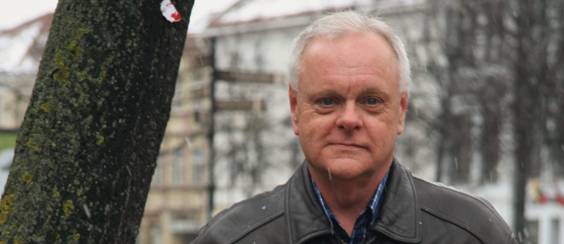
Vin Karnila
I would like to thank you Mr. Mazeika for sharing your thoughts with us and making us aware of what I'm sure is a very interesting book written by Arnas Liekis.
You bring up a topic that has been discussed many times throughout the years following 1940. The members of the Lithuanian delegation that were involved in the negotiations with Russia have always claimed that they knew that Russia at any time they chose could have invaded Lithuania. They also felt that if Russia did in fact invade, whether there was organized military resistance or not, this would result in catastrophic consequences for Lithuania and its people. Throughout the negotiations they said that what they were trying to achieve was the best possible outcome for Lithuania. In the end what they achieved was the best possible outcome that Russia would allow.
The topic of the courageous people of Finland and their organized military resistance to Russia's invasion of their homeland in relation to the fact that Russia's invasion of Lithuania in 1940 occurred without a shot being fired has also been discussed many times. The question remains how much did Lithuania know or did not know about Finland's armed resistance to Russia in what is known as the "Winter War"?
3 October 1939 the Lithuanian delegation flew to Moscow to begin the negotiations with Russia. 30 November 1939 Russia attacked Finland to begin the "Winter War". By March of 1940 both sides began to negotiate a peace treaty. Did Lithuania know that in spite of the great courage of the Finns the primary factor in Finland's success was that the Winter War was fought in some of the harshest of winter weather conditions and in equally harsh terrain? This harsh terrain the Finns knew like the back of their hand and the weather conditions to them was normal winter weather? Did Lithuania know that if Russia attacked across the gentle rolling hills and flat farmlands of Lithuania in spring or summer that the advantage of weather and terrain, that so greatly helped the Finns, would only make Russia's evil task easier? An invasion of Lithuania by Russia in the spring or summer of 1940 would have been a military situation completely the opposite of the Finland's and Russia's Winter War. Did Lithuania know that whatever peace agreement Finland and Russia came to that it would end up being short lived? Had Lithuania taken notice of the fact that no Western power had come to Finland's aid with any meaningful support? From all reports, Lithuania realized that their Military, no matter how courageously they fought, was no match against the might of Soviet Russia's army.
Many comments have been made and questions asked about the large number of government and Military top officials that left after 15 June 1940. Why didn't they stay? Why didn't they stay and resist? How could they leave their homeland? I would say that the real answers to these questions can only be answered by these top officials that left. Some left almost immediately as if they knew what would happen once Russia occupied the country. Others left after they saw what Russia was doing now that they occupied the country. In fact many people that had the means to do so left once they understood what their future would be at the hands of Russia.
All these questions to all these situations I have asked myself over and over. Again and again I come to the conclusion that more than seventy years after these events occurred, while I'm sitting in the comfort of my home and while I can walk the streets of Vilnius without (for the time being) having to worry about being run over by a Russian tank, shot by a Russian soldier, kidnapped by the NKVD, put in a gulag or executed, I am really not in a position to judge people who were trying to do the best they could for our country and simply trying to survive during very difficult and dangerous times. I guess it could be kind of easy for some to say that they should have organized formal Military resistance – and got slaughtered. It could also be easy for some to say that the top officials and the people of means should have stayed – and got executed, imprisoned, put in gulags or sent to Siberia. Personally I can't judge these people for their actions because I wasn't alive then and I wasn't involved in these dangerous and difficult times. I also refuse to be a "Monday morning quarterback" and go on and on talking about all of the "should haves" for the same reasons I just stated. The opinions of others about these matters though are something I am very interested in.
Having said all this I must say that the discussion of what happened, what did not happen, why it did happen and why it didn't happen during these times are matters that will continue to occupy my thoughts – I'm still trying to understand and make sense of all of it. Again I would like to thank you Mr. Mazeika for sharing your thoughts with all of us and I would also like to thank you for letting us know about the book by Arnas Liekis - 1939, The Year that Changed Everything in Lithuania's History. I'm sure that I am not the only one out there looking for more information about this period of Lithuania's history and I'm sure that I'm not the only one looking for more information about this so that I can try to make more sense of everything.
Dear readers, I'm sure that Mr. Mazeika and I are not the only ones out there that are interested in what happened during these times and we are not the only ones with opinions. We would please invite you to share information and your opinions on this topic with all our readers throughout the world. I'm sure this is something we all are trying to understand better.
Su pagarbe
Vin Karnila
Associate editor
---------------------------------------------------------------------------------------------------------------------------------------
Aleksander Stulgisnkis, Lithuania’s President between 1921 and 1926, decided to stay in his homeland even when the Soviet’s attacked in 1940... He paid a high price...
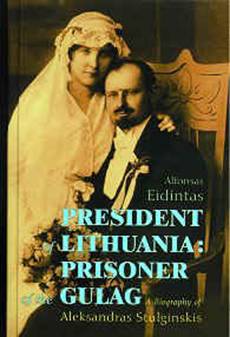
Cover of the book by Dr. Alfonsas Eidintas, “President of Lithuania:
Prisoner of the gulag (A biography of Alexander Stulginskis).”
Aleksandras Stulginskis, the first constitutional president after Lithuania had declared its renewed independence on 16 February 1918, was kidnapped at his home by Stalinist forces in June 1941 and deported to a Siberian Gulag. After he was released from the inhuman captivity, he was still for years forced to live in Siberia’s deep forests, until 1956.
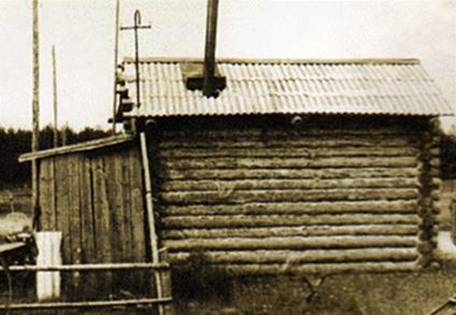
Lithuania’s President Aleksandras Stulginskis built this Siberian log cabin by his
own hands, living here with his wife Ona until 1956.
How could it be that a former head of state of a free and independent country could be kidnapped in his own home and taken around half the globe to imprisonment in a labour camp where cruelty and inhumanity were the principal characteristics?
How could it be that the rest of the world chose to ignore such an assault against a splendid leader who proudly had been fighting for democracy and independence in a nation that before the Second World War was fully on par with its neighbours in Scandinavia and Northern Europe, both economically and as an independent state?
Just think of what would have been the reactions from the international community if one of the other state leaders from the 1920s had become victims of such a cruel abuse?
Read more at https://vilnews.com/?p=6539
- Bookmark :
- Digg
- del.icio.us
- Stumbleupon
- Redit it
- Posted by - (0) Comment
Our VilNews Board Member, Vladas Lasas, awarded the Oslo Business for Peace Prize

The Business for Peace Foundation and the International Chamber of Commerce (ICC) have announced the seven recipients of the 2012 Oslo Business for Peace Awards, the highest form of recognition that can be bestowed upon a person in business.
Honourees:
Ibrahim Abouleish (Egypt), Anil Agarwal (India), Eduardo Eurnekian (Argentina), Vladas Lasas (Lithuania), David W. MacLennan (USA), Reginald A. Mengi (Tanzania) and Latifur Rahman (Bangladesh) will receive their Awards during a special ceremony on 7 May, taking place as part of the Oslo Business for Peace Summit in Oslo City Hall, Norway.
http://businessforpeace.no/2012-honourees/
Recipients are selected by The Award Giving Committee, comprising Muhammad Yunus (winner of the Nobel Peace Prize for 2006), and A Michael Spence (winner of the Sveriges Riksbank Prize in Economic Sciences in Memory of Alfred Nobel for 2001).
Usually awards are assigned to one person - but it's always recognition of the great people and great teams around them.
- Bookmark :
- Digg
- del.icio.us
- Stumbleupon
- Redit it
Aleksander Stulgisnkis, Lithuania’s President between 1921 and 1926, decided to stay in his homeland even when the Soviet’s attacked in 1940… He paid a high price…
- Posted by - (0) Comment
![]()
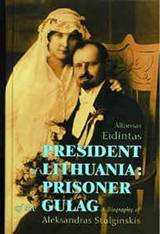
Cover of the book by Dr. Alfonsas Eidintas, “President of Lithuania:
Prisoner of the gulag (A biography of Alexander Stulginskis).”
Aleksandras Stulginskis, the first constitutional president after Lithuania had declared its renewed independence on 16 February 1918, was kidnapped at his home by Stalinist forces in June 1941 and deported to a Siberian Gulag. After he was released from the inhuman captivity, he was still for years forced to live in Siberia’s deep forests, until 1956.
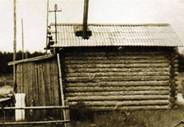
Lithuania’s President Aleksandras Stulginskis built this Siberian log cabin by his own hands, living here with his wife Ona until 1956.
How could it be that a former head of state of a free and independent country could be kidnapped in his own home and taken around half the globe to imprisonment in a labour camp where cruelty and inhumanity were the principal characteristics?
How could it be that the rest of the world chose to ignore such an assault against a splendid leader who proudly had been fighting for democracy and independence in a nation that before the Second World War was fully on par with its neighbours in Scandinavia and Northern Europe, both economically and as an independent state?
Just think of what would have been the reactions from the international community if one of the other state leaders from the 1920s had become victims of such a cruel abuse?
Read more at
https://vilnews.com/?p=6539
- Bookmark :
- Digg
- del.icio.us
- Stumbleupon
- Redit it
LT sportsmen in USA
- Posted by - (0) Comment
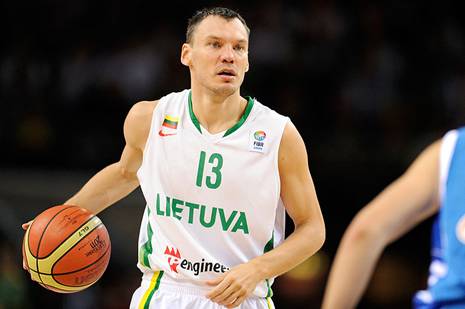
Šarūnas Jasikevičius, during EuroBasket 2011.
Text: Vin Karnila
Mention the words Sport and LITHUANIA and the next word you hear is always BASKETBALL. While a number of Lithuanian players have gone on to careers in the NBA it may surprise you to find out that quite a few Lithuanian athletes have had successful professional careers in the U.S.A. in other sports as well. What may be even a little more surprising is that these athletes excelled in what are considered “American” sports. As an example, did you know that the two players that most people say were the greatest players in the National Football League were Lithuanians?
BASKETBALL
Basketball is the sport that has tied Lithuania and USA closest together, so let’s first introduce you to the Lithuanian basketball stars “over there”.
Sarunas Jasikevičius
In July 2005 Sarunas Jasikevičius signed a three year contact with the Indian Pacers of the NBA. The point guard, who won three consecutive Euroleague championships, agreed to a three-year deal with the Pacers. Back in 1998, he was a solid wing player with Maryland, known for his shooting and intelligent play. He went back to his native Lithuania and plied his skills in club ball in Europe, becoming one of the best at his position. Arunas said “European ball is getting closer to the level of the NBA. I don't feel I have to play there to prove myself as a player,“
- Bookmark :
- Digg
- del.icio.us
- Stumbleupon
- Redit it
LT sportsmen in USA
- Posted by - (2) Comment

Šarūnas Jasikevičius, during EuroBasket 2011.
Text: Vin Karnila
Mention the words Sport and LITHUANIA and the next word you hear is always BASKETBALL. While a number of Lithuanian players have gone on to careers in the NBA it may surprise you to find out that quite a few Lithuanian athletes have had successful professional careers in the U.S.A. in other sports as well. What may be even a little more surprising is that these athletes excelled in what are considered “American” sports. As an example, did you know that the two players that most people say were the greatest players in the National Football League were Lithuanians?
BASKETBALL
Basketball is the sport that has tied Lithuania and USA closest together, so let’s first introduce you to the Lithuanian basketball stars “over there”.
Sarunas Jasikevičius
In July 2005 Sarunas Jasikevičius signed a three year contact with the Indian Pacers of the NBA. The point guard, who won three consecutive Euroleague championships, agreed to a three-year deal with the Pacers. Back in 1998, he was a solid wing player with Maryland, known for his shooting and intelligent play. He went back to his native Lithuania and plied his skills in club ball in Europe, becoming one of the best at his position. Arunas said “European ball is getting closer to the level of the NBA. I don't feel I have to play there to prove myself as a player,“
Žydrunas Ilgauskas

After being drafted by the Cleveland Cavaliers, Žydrunas Ilgauskas was selected to play in the 1997-98 Schick All-Rookie First Team. He was named MVP of the game, totaling a game-high 18 points and 7 rebounds, during the 1998 NBA All-Star Weekend in New York. Zydrunas led the Cavaliers in 1997-98 in field-goal percentage and blocked shots, ranked 2nd in rebounds, and 3rd in scoring. Unfortunately, he missed the entire 1996-97 season after undergoing surgery on his right foot. Ilgauskas rebounded to be named to the Eastern Conference All-Star Team in the 2002-03 season.
http://www.youtube.com/watch?v=Q-3z39HQwfg
Arvydas Sabonis

Arvydas Sabonis, now retired from the NBA, has been considered the best big man in the basketball world. In 1995 he said: "There's nothing left for me to prove in Europe or in the basketball world. Only the NBA remains."
But before that, he had been leading the Soviet national team to a gold medal at the 1988 Olympic Games in Seoul, South Korea. He also helped Lithuania to a bronze medal at the 1992 Olympics in Barcelona, and a second-place finish in the 1995 European Championships in Greece. In an 11-year professional career spent with club teams in the former Soviet Union and then in the Spanish League, Sabonis has led his squads to five league championships and has been named European Player of the Year four times by various publications. On August 20, 2010, Sabonis was inducted into the FIBA Hall of Fame in recognition of his great play in international competition.
http://www.youtube.com/watch?v=rsG9oApZtVI
Šarunas Marčiulionis

Šarunas Marčiulionis was a deadeye jump-shooter and capable of ferocious drives to the basket. He was a 1988 Olympic Games Gold Medal Champion in Seoul with Arvydas Sabonis.
Marčiulionis started his pro basketball career with Statyba Vilnius in the USSR League, the forerunner of the VTB United League in 1981. Drafted by the Golden State Warriors in the 6th round of the 1987 NBA Draft. He moved to the NBA in 1989 and he played four years with the Warriors, finishing as the runner-up for the Sixth Man of the Year Award in both 1992 and 1993. Marčiulionis became one of the first Europeans to get significant playing time in the NBA, helping to lead the way for the internationalization of the league in the late 1990s. After missing a year and a half with a leg injury, he was traded to the Seattle Super Sonics in 1994, then traded to the Sacramento Kings in 1995, and he finished his NBA career with the Denver Nuggets in the 1996-97 season. Having a career hampered by injury, he was on brink of making a real impression on the league before getting hurt.
Sarunas is today known as a hotel owner in Vilnius, as Founder of the Basketball Funds in Lithuania and the USA, as Founder of a private Basketball School and the Lithuanian Basketball League. In April, 1998 Sarunas became Extraordinary and Minister Pleni Potenciary of the Embassy of the Republic of Lithuania in the USA, and in 1999 he founded North European Basketball League NEBL and became its Commissioner.
http://www.youtube.com/watch?v=schzjV2RiN4
http://www.youtube.com/watch?v=fumWbJomIS4
Frank Lubin / Pranas Lubinas

Frank Lubin / Pranas Lubinas (1910 - 1999) is often called the Grandfather of Lithuanian basketball as he promoted basketball in Lithuania and helped Lithuania win its second European championship in a row. He became an Olympic champion with the US team in 1936 in Berlin, and a European champion with the Lithuanian team in 1939 in Kaunas. He was born in Los Angeles in a family of Lithuanian emigrants, studied at UCLA University and was entered into the UCLA hall of fame in 1997. He played in AAU tournaments for about 30 years.
AMERICAN FOOTBALL
Johnny Unitas / Jonas Jaunaitis

Johnny Unitas / Jonas Jaunaitis (1933 - 2002) was a professional American football player in the 1950s, 1960s and 1970s. Unitas is considered by many to have been one of the best quarterbacks to ever play the game. He was the National Football League's most valuable player in 1957, 1959 and 1964. Unitas was born in Pittsburgh, Pennsylvania in 1933. Johnny's father died when he was five years old and he was raised by his Lithuanian immigrant mother who worked two jobs to support the family.
Unitas set many passing records during his career. He was the first quarterback to throw for more than 40,000 yards, despite playing during an era when NFL teams played shorter seasons of 12 or 14 games (as opposed to today's 16-game seasons). His 32 touchdown passes in 1959 were a record at the time, making Unitas the first QB to hit the 30 touchdown mark in a season. His 47-game touchdown streak between 1956 and 1960 is a record that still stands and is considered by many the football equivalent of Joe DiMaggio's 56-game baseball hitting streak
Here is a short list of some of his other achievements:
Unitas held the record for most Pro Bowl appearances (10) by a quarterback until Brett Farve broke his record in 2009.
Unitas set the original standard for most wins as a starting quarterback with 118 regular season victories.
In 2004, The Sporting News ranked Unitas No. 1 among the NFL's 50 Greatest Quarterbacks, with Joe Montana No. 2.
Since 1987, the Johnny Unitas Golden Arm Award has been awarded to the top senior quarterback of the current year in college football.
http://www.youtube.com/watch?v=skVj2JppOOg
http://www.youtube.com/watch?v=0R-vbUvI6Bs
Dick Butkus

Dick Butkus is the man about whom the American sports press wrote; “It is possible that Butkus was the meanest, nastiest, fiercest linebacker to ever put on a helmet”. More than a quarter of a century after his retirement, there remains the Butkus image: the middle linebacker wrapping up a running back and viciously slamming him to the ground like an unwanted toy.
He was selected to eight Pro Bowls and was all-league six times. In his rookie season, Butkus led the Bears in tackles, interceptions, forced fumbles, and fumble recoveries, and regularly led the team in these categories throughout his career. Butkus recovered 27 fumbles in his career, a NFL record at the time of his retirement. He was one of the most feared players of his era and even appeared on the cover of Sports Illustrated in 1970 with the caption "The Most Feared Man in the Game." He had one of his most productive seasons in 1970 with 132 tackles, 84 assists, 3 interceptions and 2 fumble recoveries. He was forced to retire after multiple knee injuries in 1973.
http://www.youtube.com/watch?v=zBumQdwc-tE
http://www.youtube.com/watch?v=sxR9qYSHt8U
BASEBALL
Vito Tamulis

Vito Tamulis (1911 - 1974) was born in Cambridge, MA. He was a sensation at Boston English High, pitching his school to the city championship in 1930. Turning down several college scholarship offers, Yankees scout Gene McCann signed him shortly before his 19th birthday. He worked his way up the Yankee chain, with a carreer culminating in 1934 with the Newark Bears. The Newark teams during the 1930 are rated as among the one hundred best minor league teams of all time. Vito Tamulis continued to live in the Nashville area until his death in 1974.
Joe Krakauskas

Joe Krakauskas (1915 – 1960) was a Major League Baseball pitcher who played for seven seasons. He played for the Washington Senators from 1937 to 1940 and the Cleveland Indians from 1941 to 1942 and 1946. He was 11-17 at his most active, with the 1939 Senators.
Eddie Waitkus

Eddie Waitkus (1919 – 1972) was the baseball player who inspired the movie, The Natural, starring Robert Redford as Roy Hobbs. This is a true story of a great baseball player, whose entire life was totally changed, because of an act of a single obsessed fan.
As the son of Lithuanian immigrants, Edward Stephen Waitkus grew up in Boston and served in the Pacific during World War II. His army service in some of the war’s bloodiest combat earned him four Bronze Stars. On the night of June 14, 1948, at the Edgewater Beach Hotel, Waitkus’s bright career took an infamously tragic turn. He received a cryptic note summoning him to meet a young fan, Ruth Steinhagen. When Waitkus entered her hotel room, she proclaimed, “I have a surprise for you,” and then she just as quickly shot him in the chest. He survived, and in his final summers he worked with youngsters at the Ted Williams baseball camp. Cancer claimed him in 1972, just days after his fifty-third birthday.
Eddie Miksis

Eddie Miksis (1926 - 2005) was 17 years old when he made his major-league debut on with Brooklyn. In 1953, he had a career-high with the Cubs and appeared in eight World Series Games -- five with the Dodgers in 1947 and three with the Dodgers in 1949. He was traded to the Cardinals in 1957 and finished up his career with Baltimore (1957-1958) and Cincinnati (1958). He lived in Philadelphia following his retirement from baseball.
Bill Sudakis

Bill Sudakis homered for Los Angeles in his first major league game. The Dodgers' third baseman in 1969, he was made a catcher and had won the everyday job in 1970 when he broke a finger. He became a versatile utilityman. More than one-third of Sudakis's hits were for extra bases.
BOXING
Jack Sharkey / Juozas Zukauskas

Jack Sharkey / Juozas Zukauskas (1902 - 1994) is the only man to have fought both Jack Dempsey and Joe Louis. But he may be best remembered for a pair of controversial title fights with German Max Schmeling. Sharkey fought for the vacant world title in 1930 against Schmeling but was disqualified for hitting below the belt in the fourth round. In 1932, he met Schmeling once again. The champion appeared to have a clear decision but the fight was awarded to Sharkey on a split decision. In his first title defense, Sharkey was knocked out by the mob-connected Carnera in the sixth round. As he did in 1931, Sharkey began by easily outboxing Carnera for the first five rounds. But he was floored with a right uppercut in round six and counted out. Many felt the fight was fixed but Sharkey denied the accusation until his death.
HOCKEY
Dainius Zubrus

Dainius Zubrus, born in Elektrenai, Lithuania, was drafted 15th overall in the 1996 NHL Entry Draft by the Philadelphia Flyers. He made his NHL debut on October 5, 1996, scoring a goal against the Florida Panthers. In his rookie season, he helped the Flyers reach the Stanley Cup final.
The Flyers traded him to the Montreal Canadiens on March 10, 1999. He registered his first career hat-trick on October 14, 2000, against the Chicago Blackhawks, and was traded by the Canadiens to the Washington Capitals on March 13, 2001.
During the 2005-06 season he posted a career-high 57 points. In the 2006–07 season, Zubrus continued his impressive form posting 52 points in 60 games before he was traded to the Buffalo Sabres February 27, 2007.
On July 3, 2007, Zubrus a free agent, signed a six-year, $20.4 million dollar deal with the New Jersey Devils. On November 23, 2008, Dainius Zubrus had one of the best offensive games in Devils history. Zubrus tied a team record with four goals to help New Jersey win its season-high fourth straight game, 7–3 over the Tampa Bay Lightning.
At 6 ft 5 in/1.96 m and 224 lb/102 kg. he is considered a “power forward” in the NHL. His size allows him to effectively use the body when needed but in spite of his size he is considered one of the most graceful skaters in the league along with being a good scorer and a very effective play maker.
http://www.youtube.com/watch?v=cW66VP6rERY
Darius Kasparaitis

Darius Kasparaitis gave up his parental home in Elektrenai, Lithuania at the age of twelve to pursue a dream of becoming a professional hockey player which was an unusual route in a country that is dominated by basketball.
Kasparaitis played his first professional game for Dynamo Moscow, one of the premier teams in the Soviet Union, at the age of 16 during the 1988–89 season, and won the Soviet League championship with them in 1992.
He was drafted by the New York Islanders with the fifth overall pick in the first round of the 1992 NHL Entry Draft. Kasparaitis is known for his aggressive physical playing style and has led his teams in hits several times, including his rookie season, in 1992–93 NHL season with the New York Islanders. Kasparaitis has played for the New York Islanders, Pittsburgh Penguins, Colorado Avalanche and New York Rangers. Playing for Pittsburgh he scored a game seven overtime goal vs. Buffalo in 2001. Kasparaitis eventually wound up with the New York Rangers and during the 2005–06 season he served as their alternate captain.
http://www.youtube.com/watch?v=CoyoJ-Un77Y
TENNIS
Vitas Gerulaitis

Vitas Gerulaitis (1954 - 1994) was a highly sucessful professional tennis player. Born in Brooklyn, New York, his biggest success was winning the men's singles title at the Australian Open in 1977, when he defeated John Lloyd in five sets.
Gerulaitis led the Pittsburgh Triangles to the World Team Tennis championship title at Pittsburgh's Mellon Arena in 1975. He also won the men's doubles title at Wimbledon in 1975. He was a singles semi-finalist at Wimbledon in both 1977 and 1978. In 1977, he lost a long Wimbledon semi-final to his close friend and practice partner, Björn Borg 6–4, 3–6, 6–3, 3–6, 8–6. In 1978, Gerulaitis won the year end championship WCT Finals for the World Championship Tennis tour, winning over Eddie Dibbs 6–3, 6–2, 6–1.
In 1979, Gerulaitis lost in men's singles finals at the US Open to fellow New Yorker John McEnroe in straight sets. He was a member of the United States team which won the Davis Cup in 1979. In the final, he won two singles rubbers as the US beat Italy 5–0.
Gerulaitis reached his third Grand Slam singles final in 1980, when he lost in the final of the French Open to Björn Borg in straight sets.
During his career, Gerulaitis won 25 top-level singles titles and 8 doubles titles. His career-high singles ranking was World No. 3 in 1978. He retired from the professional tour in 1986.
He died in a tragic accident in 1994 at age 40. While visiting a friend's home in East Hampton, Long Island, a malfunction in the air-conditioning system caused odorless poisonous carbon monoxide gases to seep through the house, leading to his death. Intensely proud of his Lithuanian heritage, Gerulaitis was well known for correcting reporters when they mispronounced his name.
- Bookmark :
- Digg
- del.icio.us
- Stumbleupon
- Redit it
- Posted by - (0) Comment
Lithuanian-American Johnny Podres (1932-2008):
US baseball’s ‘most
valuable player’ in 1955

Johny Podres, Lithuanian American, son of immigrant parents, born and raised Upstate New York, pitched two historic World Series wins against the New York Yankees in 1955. The World Series championship was the one and only victory in the history of the "Brooklyn" Dodgers. Subsequently, the Dodgers (and Podres) moved to Los Angeles in 1958.
People always said the cigarettes and the gambling and the whiskey and the late hours would surely get Johnny Podres. In 2008, those experts were proved right. Now they’re going to have to explain how The Pod made it to 75.
- Bookmark :
- Digg
- del.icio.us
- Stumbleupon
- Redit it
- Posted by - (0) Comment
Open letter to Mayor Zuokas from Gene Emmer:
We need playgrounds
in Vilnius Old Town!

- Bookmark :
- Digg
- del.icio.us
- Stumbleupon
- Redit it
Lithuanians and other Eastern Europeans no longer so welcome to Switzerland
- Posted by - (0) Comment
![]()
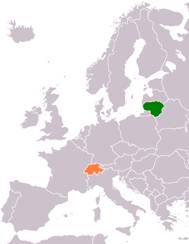
The Swiss government has decided to re-impose quotas on immigrants from Lithuania, Estonia, Latvia, Slovakia, Slovenia, Poland, Hungary and Czech Republic, officials said Wednesday.
The Swiss Cabinet announced that residents from these countries will be subject to quotas starting in May when they apply for residency permits needed to work more a year in Switzerland.
The decision reflects a longstanding uneasiness about immigration and rising concerns about integrating workers and employers' compliance with wage and labor requirements, along with a desire to hold unemployment to 3 percent even during a time of economic turmoil.
"In weighing its interests, the Federal Council took into account the fact that the free movement of persons provides a good number of advantages to the Swiss economy," the government said.
- Bookmark :
- Digg
- del.icio.us
- Stumbleupon
- Redit it
- Posted by - (3) Comment
Lithuanian-American Johnny Podres (1932-2008):
US baseball’s ‘most
valuable player’ in 1955

Johnny Podres, Lithuanian American, son of immigrant parents, born and raised Upstate New York, pitched two historic World Series wins against the New York Yankees in 1955. The World Series championship was the one and only victory in the history of the "Brooklyn" Dodgers. Subsequently, the Dodgers (and Podres) moved to Los Angeles in 1958.
People always said the cigarettes and the gambling and the whiskey and the late hours would surely get Johnny Podres. In 2008, those experts were proved right. Now they’re going to have to explain how The Pod made it to 75.
Podres was one of those fortunate human beings who was born exactly when he should have been. He pitched for the Dodgers when they desperately needed a young lefthander who would go out for the ninth inning of Game 7 of a World Series they had never won, would flick aside his cigarette, utter a what-the-hell and go out and finish shutting out the Yankees.
That’s what The Pod did in 1955, winding up airborne in the embrace of Roy Campanella, and when the Dodgers celebrated their first championship at the old Bossert Hotel that night, the party revolved around Podres.
“He and Don Drysdale were the Pied Pipers,” Vin Scully recalled Monday. “Johnny and Don Zimmer and Ed Roebuck would go out, and then Drysdale would have half the team following him. And Sandy Koufax would be eating dinner with Doug Camilli, who was the thirdstring catcher.
“When we went to Cincinnati, Johnny and his guys would go over to Kentucky and gamble all night. Roebuck once told them, ‘If I’d never met you guys, I’d be a millionaire.’ ’’
“What amazed me,” Roebuck said, “was the way Johnny would go out and have a good time every night except the night before he pitched. He would always turn in and get a good night’s sleep. If I did that I’d be staring at the ceiling.”
There was the day Zimmer and Podres called General Manager Buzzie Bavasi from a racetrack in Detroit. They owed Buzzie $100 each, but now Podres told him he’d put $200 on this sure-fire horse and they’d be even. Bavasi hung up the phone and told his secretary, “I just lost $200.” Sure enough, Podres called back later to explain that, miraculously, the 12-to-1 shot once again got nipped at the end.
It’s uncertain how Podres would have made it through baseball these days, with the personal trainers and the pitch counts.
But Podres was the pitching coach of the Phillies when they won the National League in 1993. On his blog Monday, Curt Schilling said Podres influenced him more than anyone outside his own family. When Frank Viola won the 1988 Cy Young Award, he credited Podres, who taught Viola the same changeup that worked in ’55.
Podres was not the obvious nominee to pitch that Game 7. He was 9-10 that year, and he’d gotten pasted in a World Series game in 1953, and he was facing veteran Tommy Byrne, who passed away in December, 23 days before Podres did.
“Thing is, even in spring training, he was always really good against the Yankees,” Roebuck said.
Some Dodgers remember Podres proclaiming that he only needed one run. Scully doesn’t think
Podres was ever that brash. “But he did say he wasn’t nervous, he didn’t feel the pressure, because in his mind he had nothing to lose,” Scully said.
Eight hits, eight left, no runs.
“Somebody was looking after me,” Podres said.
Somebody always was.
Podres grew up in Witherbee, N.Y., son of an iron miner. “We kept hearing about this ice fisherman who was going to be joining us,” Scully said.
He always remembered coming out of a tryout camp and then hearing General Manager Branch Rickey tell someone, “Don’t let that boy get away.”
Podres went 21-3 for the Dodgers’ Class-D farm club in Hazard, Ky., in 1951. “I was the original Duke of Hazard,” he would say. Two years later, he was the youngest player in the majors.
After the Dodgers moved to L.A. he was in the rotation for six years, went 18-5 in 1961, won two games in the ’59 World Series, and beat the Yankees again in Game 2 of the ’63 World Series.
He also pitched the first game in Dodger Stadium. In 1969, he came off an idle year to join the expansion Padres, at Bavasi’s behest, and blanked Houston over 8 1 /3 innings in their second game ever.
Later, the Twins made him their pitching coach in Walla Walla. He gathered his rookie pitchers and asked who the beer drinkers were. Several raised their hands.
“Good, you’re my starters because you need your rest between games,” Podres said. “The rest of you, you milkshake drinkers, you’re the relievers, because you can pitch every day.”
Zimmer was in Montreal one year when he found out Podres had suffered a heart attack. He drove down to Glens Falls, N.Y., to visit. When he walked in, a bed-ridden Podres handed him a betting slip and told him to hurry to the OTB parlor before post time. “And don’t tell my wife,” he said.
The years finally caught up to Podres in 2008. Now, that’s a pursuit of happiness.
- Bookmark :
- Digg
- del.icio.us
- Stumbleupon
- Redit it
- Posted by - (0) Comment
This debate continues in our SECTION 5
____________________________
Cultivating Lithuanian unity world-wide:
What YOU can do!

Boris Vytautas Bakunas
Ph. D., Chicago
A wave of unity swept the international Lithuanian community on March 11th as Lithuanians celebrated the 22nd anniversary of the Lithuanian Parliament’s declaration of independence from the Soviet Union. However, the sense of national unity engendered by the celebration could be short-lived.
Human beings have a strong tendency to overgeneralize and succumb to stereotypical us-them distinctions that can shatter even the strongest bonds. We need only search the internet to find examples of divisive thinking at work:
”50 years of Soviet rule has ruined an entire generation of Lithuanian.”
”Those who fled Lithuania during World II were cowards -- and now they come back, flaunt their wealth, and tell us ‘true Lithuanians’ how to live.”
”Lithuanians who work abroad have abandoned their homeland and should be deprived of their Lithuanian citizenship.”
Could such stereotypical, emotionally-charged accusations be one of the main reasons why relations between Lithuania’s diaspora groups and their countrymen back home have become strained?
Read more…
____________________________
A poignant article that touches on the root causes of bias and discrimination
A poignant article that touches on the root causes of bias and discrimination. Throughout Lithuanian history, the Lithuanian people showed unity, determination and resiliency to overcome 200 years of foreign occupations that, once again, resulted in a free and sovereign nation. Today, it is only through unity, determination and resiliency by Lithuanians, in Lithuania and abroad, that Lithuania can move forward and reclaim her place on the world stage.
Although, physically, Lithuanians may live oceans apart, pushing each other further away only hinders the progress of the Lithuanian nation. As this article points out, cultural promotion and exchange between all Lithuanians can solidify and preserve our national identity. Organizations, such as, the National Lithuanian Hall of Fame, and the newly established Lithuanian-American Theater "Viltis" seek to promote Lithuanian culture in America, and at the same time, reach out and recognize achievements of Lithuanians in Lithuania.
One only has to look at history to learn that peoples united for a purpose or cause will always achieve their goals.
Jon Platakis
____________________________
HOW can there be political divisiveness among Lithuanians who were old enough to witness the terrors and the gulags?
Why would there be ANY political differences among Lithuanian-Americans, at least for those over age 40 who are fully Lithuanian?? Do actual Lithuanians who lived under communism support any party which proposes to do the same thing to America that Russia did to Lithuania?? HOW can there be political divisiveness among Lithuanians who were old enough to witness the terrors and the gulags?
Mary Ellen Lloyd
____________________________
How can there be any divisiveness among Lithuanians in regards the terrors of the Gulag and the Holocaust? I don't have an answer to that question. I only know that during my own long life I have encountered several
One of the outstanding features of VilNews is how it publishes articles highlighting the achievements of Lithuanians around the world as well as the harsh realities of the past.
In 2011, two highly-acclaimed novels about the horrors of Soviet oppression were published. "Between Shades of Gray" by Ruta Sepetys told the story of a fifteen-year-old girl who along with her family was exiled to Siberia. Both hard-cover and paperback editions of "Between Shades of Gray" hit the New York Times best-seller list..

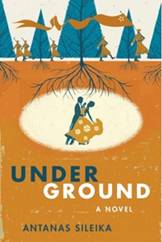

All three books, written by children of Lithuanians who escaped execution or exile, are helping to acquaint English-speaking public with one of the most tragic and heroic periods of Lithuanian history. They will also help educate a new generation of Lithuanians about the long suppressed history of Lithuania during and after World War II.
I am very happy that The National Lithuanian Hall of Fame is playing such an active role in helping to publicize all three books. This new organization has already donated more than five thousand dollars to help Lithuanian film director Tomas Donela secure the film right to "Underground." It is also making great progress in getting "Between Shades of Gray" on the reading lists of American schools and doing all it can to promote "We Are Here."
How can there be any divisiveness among Lithuanians in regards the terrors of the Gulag and the Holocaust? I don't have an answer to that question. I only know that during my own long life I have encountered several. I've spoken to and interviewed Lithuanians who collaborated with Nazis and with Soviet Communists. I've heard expressions of anti-Semitism, and I've heard several Lithuanians express nostalgia for the "good old days" under Communism. Probably, I'll never fully understand the dark side of human nature. But I also spoke to former partisans, political prisoners, and those who endured Siberian exile. My hope is that as individuals we do all we can to overcome hatred in word and in deed and help each other when we can.
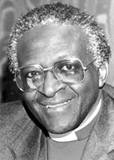
Boris Bakunas
- Bookmark :
- Digg
- del.icio.us
- Stumbleupon
- Redit it
- Posted by - (0) Comment
Chicago 26 – 28 April:
200 scholars meeting
to examine the Baltics

By Ellen Cassedy
More than 200 scholars from 15 countries are converging on Chicago – home to the largest population of Lithuanians outside of Lithuania itself – to present and respond to papers on Baltic history, literature, linguistics, political science, aesthetics, culture, sociology, psychology, economics, gender, anthropology, musicology, environment, education, and public health.
The 23rd biennial conference of the Association for the Advancement of Baltic Studies (AABS) opens April 26 at the University of Illinois. Organizers expect the conference to be the largest ever for the scholarly association, which was founded in 1968.
Members of the public are invited to attend the opening session, where the Lithuanian, Latvian, and Estonian ambassadors to the U.S. will speak on the conference theme: “The Global Baltics: the Next 20 Years.”
The session will take place at 1:30 p.m. at the Forum at the University of Illinois, 725 West Roosevelt Road, Chicago, IL 60608. For further information, contact Agnė Vertelkaitė, 312-397-0382, ext. 204, or e-mail: agne@ltconschi.org.
U.S. Senator Dick Durbin of Illinois, who is of Lithuanian descent, will address the three-day conference on Friday, April 27, on the topic of “The Unbreakable U.S.-Baltic Partnership.”

- Bookmark :
- Digg
- del.icio.us
- Stumbleupon
- Redit it
- Posted by - (2) Comment
Chicago 26 – 28 April:
200 scholars meeting
to examine the Baltics

By Ellen Cassedy
More than 200 scholars from 15 countries are converging on Chicago – home to the largest population of Lithuanians outside of Lithuania itself – to present and respond to papers on Baltic history, literature, linguistics, political science, aesthetics, culture, sociology, psychology, economics, gender, anthropology, musicology, environment, education, and public health.
The 23rd biennial conference of the Association for the Advancement of Baltic Studies (AABS) opens April 26 at the University of Illinois. Organizers expect the conference to be the largest ever for the scholarly association, which was founded in 1968.
Members of the public are invited to attend the opening session, where the Lithuanian, Latvian, and Estonian ambassadors to the U.S. will speak on the conference theme: “The Global Baltics: the Next 20 Years.”
The session will take place at 1:30 p.m. at the Forum at the University of Illinois, 725 West Roosevelt Road, Chicago, IL 60608. For further information, contact Agnė Vertelkaitė, 312-397-0382, ext. 204, or e-mail: agne@ltconschi.org.
U.S. Senator Dick Durbin of Illinois, who is of Lithuanian descent, will address the three-day conference on Friday, April 27, on the topic of “The Unbreakable U.S.-Baltic Partnership.”

 |
Ellen Cassedy traces her Jewish family roots to Rokiskis and Siauliai. Her new book, We Are Here: Memories of the Lithuanian Holocaust, was published in March and will appear in Lithuanian in May. She lives in Washington, D.C. Visit her website at www.ellencassedy.com. |
- Bookmark :
- Digg
- del.icio.us
- Stumbleupon
- Redit it
- Posted by - (0) Comment
Cassedy and Sepetys in
Balzekas Museum, Chicago
Sunday, April 29 - 2 p.m.
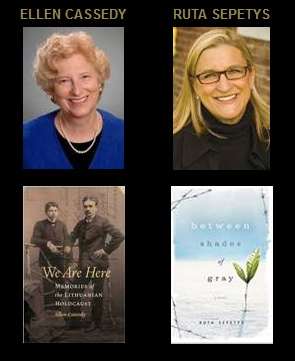
Join Ellen Cassedy, author of We Are Here: Memories of the Lithuanian Holocaust, and Ruta Sepetys, author of Between Shades of Gray, her best-selling novel about the Siberian deportations, as they share – and compare – their journeys into Lithuania’s dark years, and offer hope for the future.
BALZEKAS MUSEUM OF LITHUANIAN CULTURE
6500 S. PULASKI ROAD CHICAGO, IL 60629
TEL.: 773.582.6500
FAX: 773.582.5133
Open 10 AM - 4 PM daily
- Bookmark :
- Digg
- del.icio.us
- Stumbleupon
- Redit it
- Posted by - (5) Comment
The Litvaks
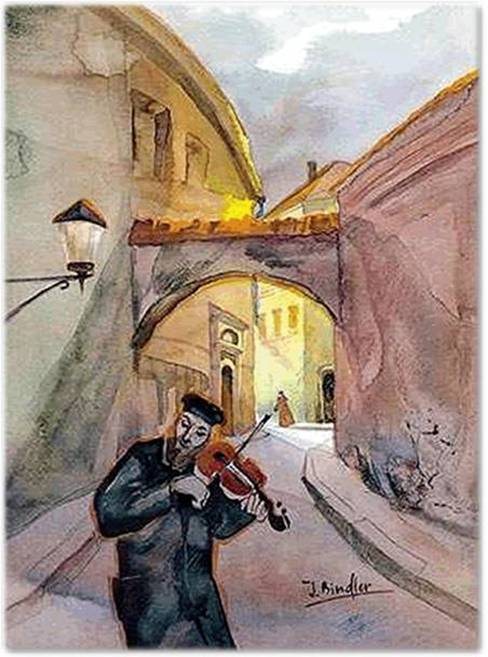
Watercolour by Izabele Bindler (1932 – 2003)
Jews trace their origins in Lithuania back to the days of Grand Duke Gediminas in the early 14th century, and by the late 15th century there were already thriving Jewish communities here. In time, Vilnius became known as the "Jerusalem of the North," a centre of Jewish religious learning. The Jews of Lithuania lived an intense Jewish life, and their role and influence in the major Jewish political and cultural movements were far greater than their numbers would have suggested. Vilnius became a prominent international, intellectual centre. Here there were once as many synagogues (totally 96) as churches—including the Great Synagogue, built in 1573, a vast complex of prayer spaces and schools.
Here were the innumerable yeshivas, with their famously erudite scholars (it was said that at one time there were 333 Jews of Vilnius who could recite the Talmud by heart). Here, in the 18th century, lived one of the greatest Talmudic experts of all time, the legendary Gaon of Vilna, to whom congregations from as far away as Portugal would send questions about matters of religious law or textual interpretation. Here, too, was the birthplace of the world-renowned Yiddish Scientific Institute; here was the Strashun Library, with its tens of thousands of volumes containing irreplaceable incunabula of Hebrew texts. Here flourished the most distinguished publisher of Hebrew books, the Widow & Brothers Romm, whose multi-volume Talmud, each page a masterwork of scholarship, composition, and design, was considered the pinnacle of Jewish publishing. Vilnius was also the greatest city of Diaspora learning, and at a time when others in Europe were effectively illiterate, all the Jews in Vilnius could read and write. This was so unusual that it provoked the invention of a brand-new word, "Vilner," meaning "an educated man with knowledge.
The below information about the Litvaks is from Wikipedia, the free encyclopedia http://en.wikipedia.org/wiki/Lithuanian_Jews
Background
Lithuanian Jews or Litvaks are Jews with roots in the Grand Duchy of Lithuania: (present-day Belarus, Lithuania, Ukraine, and the northeastern Suwałki region of Poland). The term is sometimes used, especially in Israel, to cover all Orthodox Jews who follow a "Lithuanian" (Ashkenazic and non-Hasidic) style of life and learning, whatever their ethnic background.
Lithuania was historically home to a large and influential Jewish community that was almost entirely eliminated during the Holocaust: see Holocaust in Lithuania. Before World War IIthere were over 110 synagogues and 10 yeshivas in Vilnius. Before World War II, the Lithuanian Jewish population was some 160,000, about 7% of the total population. Vilnius (then Wilno in the Second Polish Republic) had a Jewish community of nearly 100,000, about 45% of the city's total. About 4,000 Jews were counted in Lithuania during the 2005 census. There are still strong communities of Jews of Lithuanian descent around the world, especially in Israel, the United States, South Africa, Zimbabwe, and Australia.
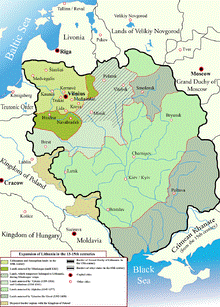
The Grand Duchy of Lithuania
The adjective Litvish means "Lithuanian" (Latvian Jews were known as Lettish): the noun for a Lithuanian Jew is Litvak. Of the main Yiddish dialects in Europe, the Litvishe Yiddish(Lithuanian Yiddish) dialect was spoken by Jews in Lithuania, Belarus, and in the Suwałki region of northeastern Poland.
[edit]Ethnicity, religious customs and heritage
The characteristically "Lithuanian" approach to Judaism was marked by a concentration on highly intellectual Talmud study. Lithuania became the heartland of the traditionalist opposition to Hasidism, to the extent that in popular perception "Lithuanian" and "mitnagged" became virtually interchangeable terms. However, a sizable minority of Lithuanian Jews belong(ed) to Hasidic groups, including Chabad, Slonim, Karlin (Pinsk) and Koidanov. With the spread of the Enlightenment, many Lithuanian Jews became devotees of the Haskala (Jewish Enlightenment) movement in Eastern Europe pressing for better integration into European society, and today many leading academics, scientists and philosophers are of Lithuanian Jewish descent.
The most famous Lithuanian institution of Jewish learning was Volozhin yeshiva, which was the model for most later yeshivas. "Lithuanian" yeshivas in existence today include Ponevezh,Telshe, Mir, Kelm, and Slabodka. In theoretical Talmud study, the leading Lithuanian authorities were Chaim Soloveitchik and the Brisker school; rival approaches were those of the Mir and Telshe yeshivas. In practical halakha the Lithuanians traditionally followed the Aruch HaShulchan, though today the "Lithuanian" yeshivas prefer the Mishnah Berurah, which is regarded as both more analytic and more accessible.
In the 19th century, the Orthodox Ashkenazi residents of the Holy Land were broadly speaking divided into Hasidim and Perushim, who were Lithuanian Jews influenced by the Vilna Gaon. For this reason, in modern day Israeli Haredi parlance the terms Litvak (noun) or Litvisher (adjective), or in Hebrew Litaim, are often used loosely to include any non-HasidicAshkenazi Haredi individual or institution. Another reason for this broadening of the term is the fact that many of the leading Israeli Haredi yeshivas (outside the Hasidic camp) are successor bodies to the famous yeshivot of Lithuania, though their present-day members may or may not be descended from Lithuanian Jewry. In reality, both the ethnic makeup and the religious traditions of the mitnagged communities are much more diverse.
History
Some sources claim that Jews began living in Lithuania as early as the 8th century. In 1388 they were granted a charter by Vytautas, under which they formed a class of freemen subject in all criminal cases directly to the jurisdiction of the grand duke and his official representatives, and in petty suits to the jurisdiction of local officials on an equal footing with the lesser nobles (szlachta),boyars, and other free citizens. As a result, the community prospered.
In 1495 they were expelled by Alexander Jagiellon, but allowed to return in 1503. The Lithuanian statute of 1566 placed a number of restrictions on the Jews, and imposed sumptuary laws, including the requirement that they wear distinctive clothing, including yellow caps for men and yellow kerchiefs for women.
The Khmelnytsky Uprising destroyed the existing Lithuanian Jewish institutions. Still, the Jewish population of Lithuania grew from an estimated 120,000 in 1569 to approximately 250,000 in 1792. After the 1793 Second Partition of the Polish-Lithuanian Commonwealth Lithuanian Jews became subjects of the Russian Empire.
Lithuanian Jews in the Second World War
The Jewish Lithuanian population before World War II numbered around 220,000. During the German invasion of June 1941, 206,800 Jews were murdered by the Nazis and Lithuanian collaborators. Most of the Jews were taken into the woods to be shot in graves they were forced to dig themselves. Notable execution locations were in the Paneriai woods (see Ponary massacre) and the Ninth Fort .
Culture
Litvaks have an identifiable mode of pronouncing Hebrew and Yiddish; this is often used to determine the boundaries of Lita (area of settlement of Litvaks). Its most characteristic feature is the pronunciation of the vowel holam as [ej] (as against Sephardic [oː], Germanic [au] and Polish [oj]).
In the popular perception, Litvaks were considered to be more intellectual and stoic than their rivals, the Galitzianers, who thought of them as cold fish. They, in turn, disdained Galitzianers as irrational and uneducated. Ira Steingroot's "Yiddish Knowledge Cards" devote a card to this "Ashkenazi version of the Hatfields and McCoys." This difference is of course connected with the Hasidic/mitnagged debate, Hasidism being considered the more emotional and spontaneous form of religious expression.
The two groups differed not only in their attitudes and their pronunciation, but also in their cuisine. The Galitzianers were known for rich, heavily sweetened dishes in contrast to the plainer, more savory Litvisher versions, with the boundary known as the "Gefilte Fish Line."
Genetics
The Lithuanian Jewish population may exhibit a genetic founder effect. The utility of these variations has been the subject of debate. One variation, which is implicated in familialhypercholesterolemia, has been dated to the 14th century, corresponding to the establishment of settlements in response to the invitation extended by Vytautas the Great in 1388. A relatively high rate of early-onset idiopathic torsion dystonia in the population has also been identified as possibly stemming from the founder effect.
Jews in Lithuania today
Interest among descendants of Lithuanian Jews has spurred tourism and a renewal in research and preservation of the community's historic resources and possessions. Increasing numbers of Lithuanian Jews are interested in learning and practising the use of Yiddish.
The beginning of the 21st century was marked by conflicts between members of Chabad-Lubavitch and secular leaders. In 2005, Chief Rabbi Sholom Ber Krinsky was physically removed from the Synagogue by two men hired by the community's secular leader Mr. Alperovich, who then declared a new Chief Rabbi.
Among notable contemporary Lithuanian Jews are the brothers Emanuelis Zingeris (a member of the Lithuanian Seimas) and Markas Zingeris (writer), Arkadijus Vinokuras (actor, publicist), Gercas Žakas (football referee), Gidonas Šapiro-Bilas (pop-singer from ŽAS), Dovydas Bluvšteinas (music producer), Leonidas Donskis (philosopher, essayist), Icchokas Meras(writer), Grigorijus Kanovičius (writer), Aleksas Lemanas (singer), Rafailas Karpis (opera singer (tenor)), Šabtajus Kalmanovičius (businessman and alleged criminal mastermind), David Geringas (world-renowned cellist and conductor), Liora Grodnikaitė (opera singer (mezzo-soprano)).
- Bookmark :
- Digg
- del.icio.us
- Stumbleupon
- Redit it
VilNews e-magazine is published in Vilnius, Lithuania. Editor-in-Chief: Mr. Aage Myhre. Inquires to the editors: editor@VilNews.com.
Code of Ethics: See Section 2 – about VilNews. VilNews is not responsible for content on external links/web pages.
HOW TO ADVERTISE IN VILNEWS.
All content is copyrighted © 2011. UAB ‘VilNews’.

 Click on the buttons to open and read each of VilNews' 18 sub-sections
Click on the buttons to open and read each of VilNews' 18 sub-sections 






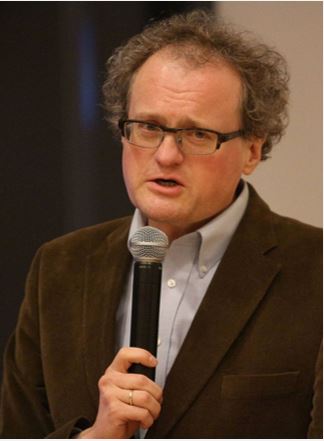
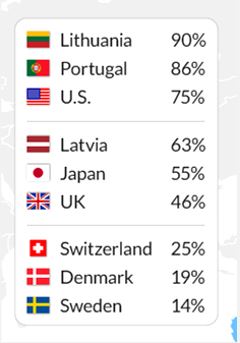
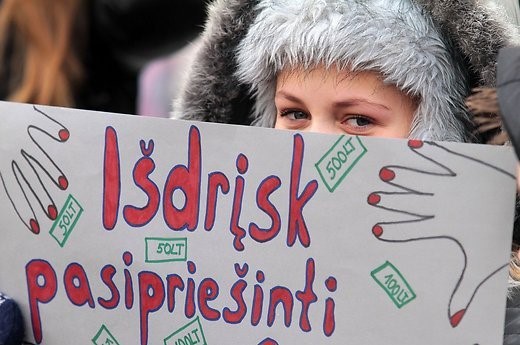


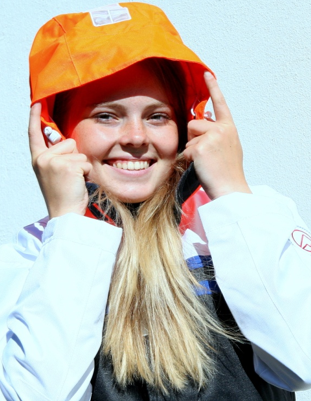

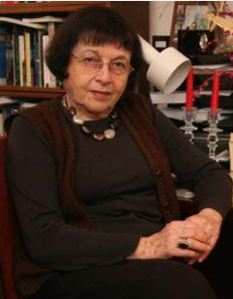
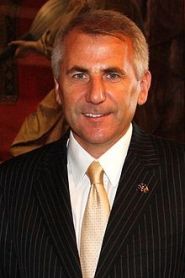
.jpg)
